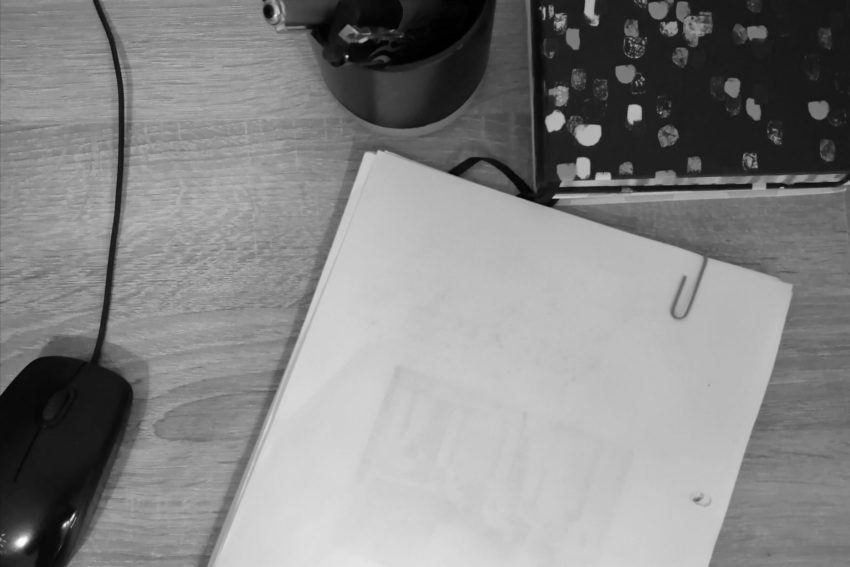
This blog post is part of our Emotions and Ethics series, following the webinar ‘Emotions and Ethics: the use and abuse of historical images,’ held on 17 June 2020. This guest blog is written by Dr Jennifer Wallis, a historian based at Imperial College London, where she is Lecturer in History of Science and Medicine in the Centre for Languages, Culture and Communication, and Medical Humanities Teaching Fellow in the Faculty of Medicine. Her publications include Investigating the Body in the Victorian Asylum (2017) and the co-authored volume, Anxious Times: Medicine and Modernity in Nineteenth-Century Britain, which was published by University of Pittsburgh Press last year.
Picturing Death: Dealing with Post-Mortem Images
Ten years ago I began a PhD in the history of 19th-century psychiatry, focusing on the body in British asylum practice. During my work in the archives, I came across a photograph album kept by a pathologist that would come to shape and inform much of my PhD. In the album, alongside patient portraits, pathological specimens, and photomicrographs, were several photographs of dead patients in the asylum mortuary.
The post-mortem photograph is one of several variants of death photography. ‘Ever since cameras were invented,’ writes Susan Sontag in Regarding the Pain of Others (2003), ‘photography has kept company with death’. Unlike the romanticized post-mortem photograph popularized by Stanley Burns’ Sleeping Beauty collections and The Thanatos Archive, the post-mortem images I worked with were very ‘raw’ images of the dead body. There was no attempt to arrange the body in an aesthetically pleasing manner, much less to construct the illusion of a person who was merely sleeping. Limbs were contorted into impossible positions, mouths frozen into gasping O’s.
Like the ‘unconventional’ medical portrait of the blood-spattered surgeon described in Daniel Fox and Christopher Lawrence’s Photographing Medicine (1988), the post-mortem photograph was not intended for dissemination. Rather, it was ‘private imagery’ shared among doctors. In the photographs I worked with, the main reason for the photographs being taken seemed to be to record the contraction of patients’ limbs, but some simply documented spectacular or anomalous bodies.
The images in the album were instructive, however. They helped to illuminate practices of asylum photography, the use of pathological instruments, and (by examining the backgrounds of pictures) hospital architecture. I still have a photocopy of the album, which the archive allowed me to make for my research. It is covered in my handwritten notes – matching a patient or pathological specimen to a case record, for example, or occasionally to a published article by one of the asylum staff. I have meticulously noted the measurements of each photograph, and arrows in bright blue ink point to features within the images that I thought important. Looking back at this photocopy now, I see that I didn’t make any notes about my emotional reactions to the images. Did I really not have any? Or did I purposefully concentrate my attention on other things: the dark sheets the bodies lay upon, the pieces of equipment visible on the table, the tiled mortuary wall in the background?
Somewhere along the line my immediate emotional response to these images has been lost. Ten years ago, I don’t think I experienced these images as particularly shocking or upsetting. Yet, over time, I seem to have undergone an opposite process to desensitization: I have come to find these images increasingly difficult to look at. Roland Barthes’ punctum (the intense personal effect a photograph may have on a viewer) is fluid and changeable, with the affective power of photographs shifting over time. Correspondingly, our interpretation of the ethics surrounding such images may also shift: Why do I still have these images in my office? What do I expect to do with them.

Image courtesy of Jennifer Wallis
The questions I pose here have no simple answers, just as there is nothing straightforward about images of death. What the images depict is messy, unfathomable, abstract yet painfully real. For some, these are easy sources to work with. For others, they are impossible objects. For many of us, the position is somewhere in between. I confess that I remain fascinated by many of these images. They are valid subjects of historical inquiry that I continue to work with, but they can come with a heavy burden. I will wonder, towards the end of the afternoon, why it is that I feel suddenly depressed, crestfallen. Oh! Of course! I’ve spent the day alone, looking at images of death.
Much scholarship about the ‘emotion work’ of research focuses on research with living participants –interviews, for instance. The experience of working with historical materials is less often discussed. In her recent blog for this website, Beatriz Pichel articulates similar experiences to mine in regard to the historical photographs she works with and suggests that we acknowledge our emotional responses to such materials as a valid part of the research experience. Alongside the recognition that our research can have significant emotional effect, there is a need for more guidance and support – especially for PhD students embarking on a course of research that will be, for many, a very solitary endeavour. At the University of Sheffield Kay Guccione and colleagues have produced a guidance paper for those engaged in ‘emotionally demanding research’. They offer several practical suggestions for researchers, including avoiding taking sensitive materials home and identifying peers and supervisors to take part in debriefing sessions. There are obvious ethical issues in looking at, reproducing, and disseminating images of the dead body. But we also have ethical duties to our students and colleagues: as well as thinking about what the researcher may do with such images, we should also be asking what such images may do to the researcher.
By Jennifer Wallis
